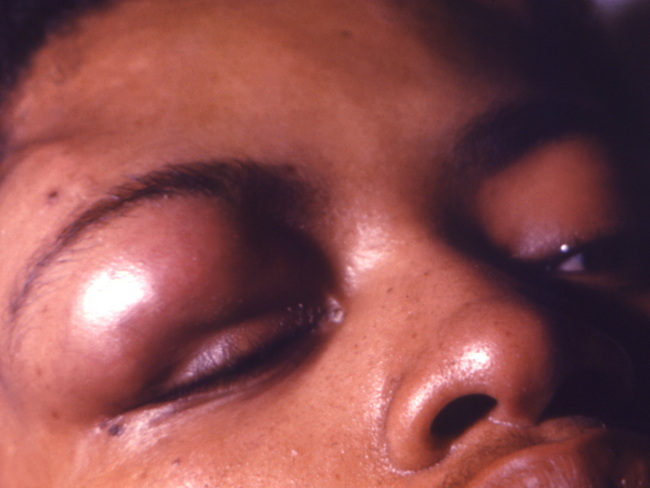Disseminated Coccidioidomycosis


Comments:
Disseminated Coccidioidomycosis: Coccidioidal infection triggers a cellular immune response through Th1 cells. The key to defense against coccidioidomycosis is delayed type hypersensitivity which offers long-lived protection from reinfection. In 1% of cases, the infection becomes blood-borne and disseminates. Genetic predisposition, immunosuppression and certain ethnicities (African-American, Filipinos) are risk factors for dissemination. In immunocompromised patients, frequently there is reactivation of previously quiescent sites. Granulomatous lesions can form in bones, joints, lymph nodes, bone marrow, pericardium, peritoneum, soft tissues, fallopian tube, uterus, epididymis, prostate, breast and the central nervous system. Multiple sinus tracts may form near the sites of internal lesions.This photograph shows a patient with disseminated coccidioidomycosis who developed an intraorbital abscess. Image source: Dr. J. Walter Wilson, University of California Press, Berkley, California/CDC-PHIL. Original image is here. The use of this image does not constitute its endorsement or recommendation by the U.S. Government, Department of Health and Human Services, or Centers for Disease Control and Prevention.



